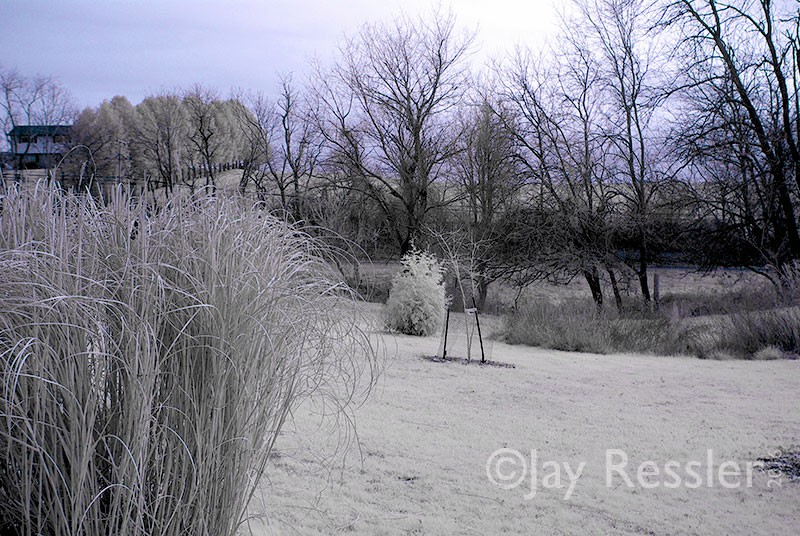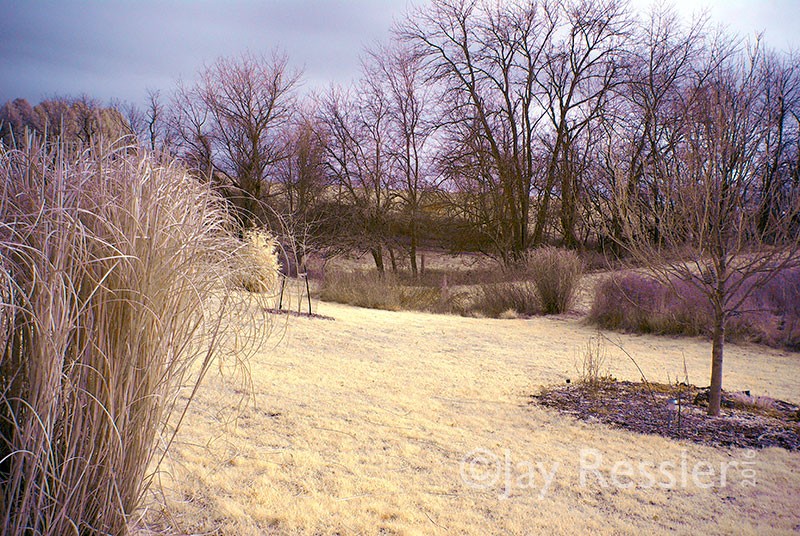Week No. 2. Blue Sky Infrared


Yesterday I received my old Pentax K10D back from Kolari Vision converted to an Infrared camera (Kolari is the only service I could find that converts Pentax cameras.)
These pictures from my back yard are my first tries at developing false color schemes with blue sky achieved by switching the red and blue channels. The picture that comes straight from the camera has strong magenta tones; the 720 nm IR filter blocks most visible light allowing artifacts from he red end of the visible spectrum through to the sensor. Note the blue cast on the top of the flowing grasses where reflection from the sky is strongest.
There is no such thing as color in the infrared portion of the electromagentic spectrum. Color is a function of human perception and human beings cannot see infrared radiation. By manipulating the artifacts of visible light between 720 nm and 850 nm a false color scheme can be achieved.
The white balance I used for the first picture was the one that was set in the factory that converted the camera. The second was based on using a custom white balance that shifted a bit cooler than the default. Further experimentation will be needed to find the best manual white balance to use with the converted camera. Green grass is used to set the white balance with infrared cameras. Photosynthesizing vegetation floresceses to appear white in infrared photography.
